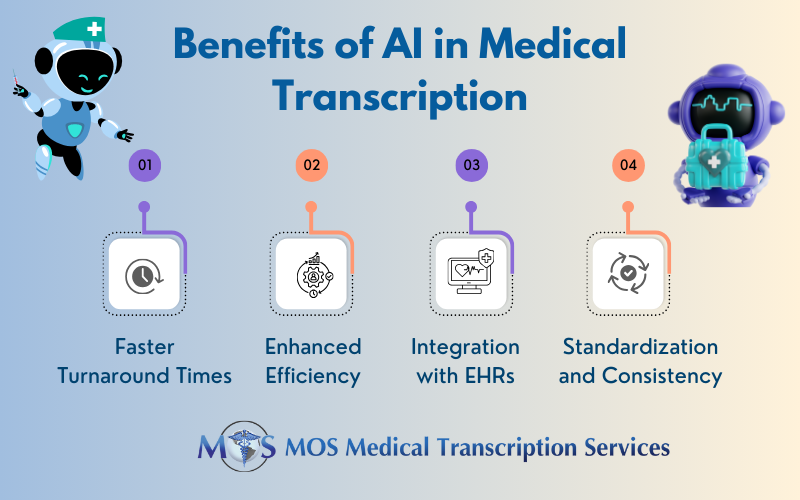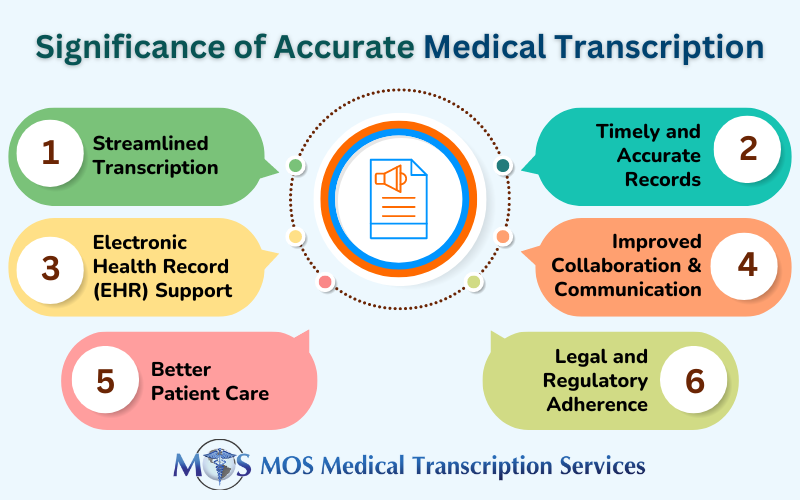
Table of Contents
Getting important work done in a day is every professional’s dream. For physicians, efficient time management can ensure more time to provide quality care. When faced with a rising influx of patients with chronic conditions, flu, and other infectious diseases, making time to provide the personal attention and care patients deserve can be a challenge. According to research from The PwC Health Research Institute, patients expect the same facilities and customer service from their physician as they would from a bank, hotel or airline! Proper time management is essential to provide patients that kind of service and personalized attention. While medical transcription outsourcing is an effective way option to cut down time spent on EHR documentation, there are many other strategies physicians can use to find more time to provide quality care, and also maintain work-life balance.
Need for Effective Time Management
With the emphasis on value and efficiency in health care delivery, the time that physicians spend on patient care is an important resource. However, the increasing amount of time physicians spent on documenting care and performance metrics and meeting practice administrative requirements take away time spent with patients. Medical Economics reported on a new study which found that primary care providers (PCPs) require an average of 26.7 hours to effectively carry out administrative tasks and provide care to their patients on a given day. Out of that non-clinical time, physicians need to spend over three hours a day on documentation and inbox management alone, according to the research published in The Journal of General Internal Medicine.
Strategies for Physicians to Save Time for Patient Care
There are only 24 hours in a day. Effective time management is essential for physicians to find more time to provide quality care. Here is a list of strategies that can help physicians find more time for patients:
- Delegate tasks to a virtual assistant: Hiring a virtual assistant can help physicians free up more time for patients. Every day tasks that a virtual assistant can help with include: managing calls, patient appointment scheduling and cancellation, securing and organizing medical records, email management, verifying patient eligibility, handling patient payment inquiries, and managing administrative tasks such as bookkeeping. A virtual assistant can be hired part-time, to meet project needs, or full time. With the right virtual office support, physicians can improve front desk efficiency and ensure that patients get the attention they deserve.
- Minimize distractions and reclaim time: Physicians should limit activities that can affect productivity and time with patients. According to a 2021 Cureus study that looked into physician usage of social media platforms, 26.6% of the 158 participants spent less than an hour on social media, 31% spent one to 2 hours, 28.5% spent 2 to 3 hours, and 13.9% reported spending more than 4 hours during the day. Using social media professionally may be necessary, but casual scrolling on social media for hours can be a major time-waster for physicians. Other distractions that can lead to loss of valuable time for physicians include repetitive activities, email burden, etc. Solutions for “time wasters” recommended in a paper published by group.bmj.com include: developing automated patient education handouts to avoid repetitive activities, creating ‘quick text’ for frequently used phrases in email or in electronic medical records, organizing the desk, office, communication and electronic and paper files.
- Proper use of the electronic medical record (EMR) system: Proper EMR use also improves time management. Physicians should be knowledgeable about the system’s automatic ‘quick text’ features so that they can efficiently document medical information during the patient encounter. Voice recognition software can also enhance productivity. Other new technologies such as cloud backup systems for important files and articles, synchronized calendars and task lists can also improve time management and help physicians get more time for patient care.
- Improve communication skills: Regardless of visit length, physicians must develop strategies to enhance the quality of care in the available time. Effective patient-physician communication impacts patient satisfaction and outcomes, including medication adherence. Listening and asking patient centered questions may require more time but this can be addressed by establishing the agenda for visit at the outset, paying attention to the patient’s emotional concerns, and listening actively.
- Team-based care: A team approach may help physician manage their time more effectively to focus on their patients. This strategy involves the efficient use of support staff to reinforce the physician’s message and understand patients’ needs. In team-based care, different players treat a patient and each member of the team must work with the others to drive optimal care outcomes. Key tasks in an outpatient encounter include data gathering, physical examination and synthesis of data, medical decision-making, and patient education and plan-of-care implementation. The data gathering, including documenting the patient’s complaints and gathering more information through questioning, can be handled by clinical assistants. The physician can develop protocols and templates based on specific patient complaints and chronic conditions. Team based care can save time and improve patient outcomes and practice efficiency.
- Outsource medical transcription: EHR documentation is tedious as it involves too much time doing data entry which takes away from direct eye contact with patients. A time and motion study to examine how physicians allocate their time during a typical clinical day in ambulatory care practice. The American Medical Association reported on the key study findings, which are as follows:
- For every hour physicians provide direct clinical face time to patients, nearly 2 additional hours are spent on EHR and desk work within the clinic day.
- Outside office hours, physicians spend another 1 to 2 hours of personal time each night doing additional computer and other clerical work.
The most practical option to reduce the EHR documentation burden is to outsource medical transcription. With an experienced medical transcription service provider handling the task, physicians can be assured of accurate, integrated and complete digital patient medical records from their notes. With the right support, physicians can spend more time on patient care and also preserve the integrity of the medical record.
More time with patients translates to better care, increased revenue and improved practice efficiency.
MTS has extensive experience providing medical transcription services for various medical specialties. Our HIPAA compliant medical transcription company provides accurate and timely EHR documentation solutions, allowing physicians and their staff to focus on patient care.


